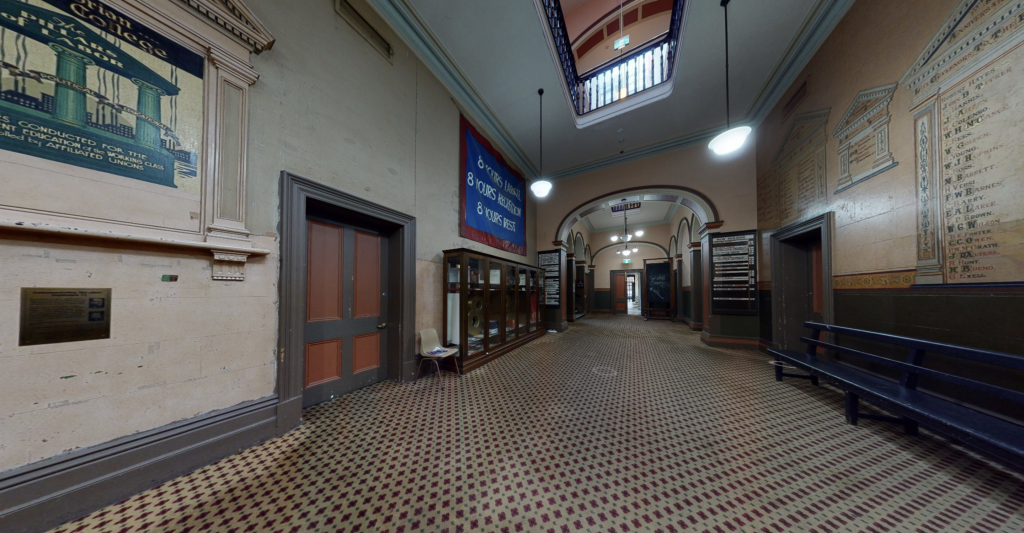We were used to consuming architecture – both near to home and far away – with ease. But this year, our travel wings severed, heritage sites found themselves scrambling to hasten their digital aspirations.
Marcel Proust famously imagined one day travel might be possible without needing to voyage to “strange lands” but through “possessing other eyes”. In 2020, this has become true: virtual reality has allowed audiences to stay put but engaged in architecture and historic buildings.
From the comfort of our home, we can participate in a virtual guided tour of the English architect John Soane’s wondrous house and museum in the heart of London.
The intricate and beautifully preserved Georgian interiors, including the basement “Sepulchral Chamber” – where Soane installed a 3,000-year-old pharaoh’s tomb in 1824 – can be accessed from multiple viewing angles that turn the solid stone walls magically transparent.
Modernist buffs can visit the Farnsworth House in Illinois, designed by Mies van der Rohe in 1945, where the relationship between the glass walls, minimal interior and exterior landscape is emphasised.

The serene Kettle’s Yard house in Cambridge is a deceptively simple mid-20th century English house, beautifully transformed by art collector Jim Ede. Virtual visitors can even exit through the museum gift shop.
In Australia, you can take online tours of the Shrine of Remembrance and the Australian War Memorial Museum.
But, despite their rapid evolution, most VR tours don’t come close to replacing the real experience.
Virtually stepping into Melbourne
Under lockdown, the annual Open House Melbourne was unable to host their physical program. Instead, they produced an array of virtual building tours, talks and resources in collaboration with immersive technology company PHORIA studio and the sites themselves.
The most successful projects didn’t just rely on virtual visualisation. They melded technology with content from architects, designers, conservators and custodians. And they have been reaching much larger audiences than physical tours can normally accommodate.
Park Life House in Williamstown, designed by Architecture Architecture, can be visited via tour hosted by the house’s architect Michael Roper.
Park Life House was completed in 2019: a modern extension on a 1940s Housing Trust home. Roper directs us to consider the relationship of rooms, their materials and the framing of views from inside to out. But the intimacy and modesty of this project is somewhat lost on a digital platform.
At the award-winning restoration of the Trades Hall and Literary Institute, visitors can glide around and view in stunning detail the meticulously conserved interiors – right down to reading the names on trade union plaques and the layers of wallpaper and paint uncovered in the restoration.
Without the accessibility constraints of a physical tour, visitors can linger and magnify details. Virtual reality is good at enabling this forensic looking at surfaces.
At Boyd House II on Walsh Street, South Yarra, thanks to a collaboration between PHORIA, Arup, the Robin Boyd Foundation and volunteers, visitors can fly over the unique tensile roof structure, appreciate the courtyard plan and then enter this iconic modern house designed in 1958.
But there is no replacement for really experiencing how the two distinct parts of Boyd’s building relate to the intimate courtyard garden, for touching the soft brick walls, or for hearing footsteps fall on the stairs.
These sites can remain “open” for a much longer period than the one weekend of the festival, but they lack the dimensions of visiting real places together with strangers, family and friends. And they can’t yet simulate the changing responses of buildings to different times of day and the changing weather; or allow visitors to feel the scale and impact of spaces in relation to our own bodies.
Designing room for play
These kinds of virtual heritage tours are not at the cutting edge of digital visualisation in comparison to the staggeringly interactive micro-worlds created by the gaming industry.
The ability to make 360-degree panoramas on mobile phones, VR scanning and drone photography are now all reasonably accessible – as evident in their use by commercial real estate platforms in Australia.
But there is a difference between visually capturing these buildings and communicating great content. This requires significantly higher investments.
VR cannot yet capture the unique and unexpected atmospheres, sounds, smells and qualities of light inherent in any good design.
Some academics and heritage organisations have called for international guidelines on the production of VR heritage tours and experiences, with aims of maximising accessibility, accuracy and authenticity.
However this bid for standardisation is in danger of closing down innovation, play and experimentation: all things we need to successfully explore and recreate the many ways buildings can affect us.
- is Professor, Architecture, University of Melbourne
- This article first appeared on The Conversation




